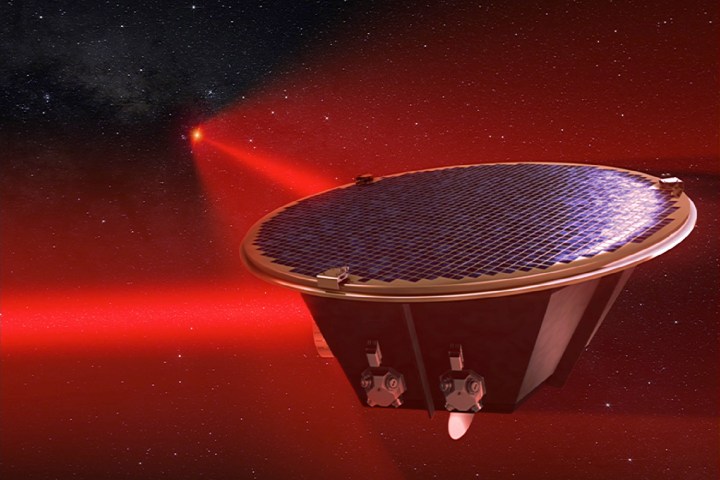
LISA is a space observatory that’s designed to measure gravitational waves, tiny ripples in the underlying fabric of the universe, caused by the motions of massive objects. Gravitational waves were first hypothesized by Albert Einstein way back in 1915, but they were only detected for the first time by the ground-based LIGO system in 2015.
“They’re a brand-new way of seeing the universe and extremely exciting,” Professor Mark McCaughrean, senior advisor for Science and Exploration at ESA, told Digital Trends. “Measuring gravitational waves from space will enable us to see whole new kinds of phenomena that can’t be seen by LIGO. For example, LISA will be able to see gravitational waves caused when two supermassive black holes, each perhaps millions of times more massive than our sun, spiral around each other and merge. This can happen when galaxies collide, and by observing these black hole mergers, we can learn about the history of galaxy evolution over the 13.8 billion history of the universe.”
LISA is actually three separate spacecraft in a triangle, each separated by roughly 2 million kilometers. The spacecraft are linked by high-powered lasers, and by accurately measuring the changes in distances between one another, they’ll be able to detect the gravitational waves as they sweep through the solar system.
While 2034 is still a long way off, though, McCaughrean said that plenty needs to be done between now and then.
“We still need to develop the telescopes and high-powered lasers that will link the spacecraft over 2 million kilometers along, and then we need to build and test the three very complicated spacecraft,” he said. “None of this will be easy, and such missions often take decades to put together. It’s also a question of money: We’re already building several other very exciting scientific space missions, including one which will be launched to Mercury next year called BepiColombo; one that’ll go close to the Sun called Solar Orbiter; one to measure the influence of dark matter and dark energy in the universe called Euclid; two to discover planets going around other stars called CHEOPS and PLATO; a mission to Jupiter and its icy moons called JUICE; and a new large X-ray observatory called Athena. Even in the best case, it’ll take us until 2030 to get the technology fully together and built. Working in space requires a lot of hard work and patience, and even though I’ll be retired by the time LISA flies, you can be very sure that I’ll be watching on with huge interest when it finally flies.”
Between projects like this, NASA designing futuristic chainmail for space missions, 3D printing on the International Space Station, and pretty much everything Elon Musk is doing with SpaceX, it certainly seems like we’re living on the cusp of a great era in space exploration.


